Sewing Machines in Sears Catalog from 1894-1949
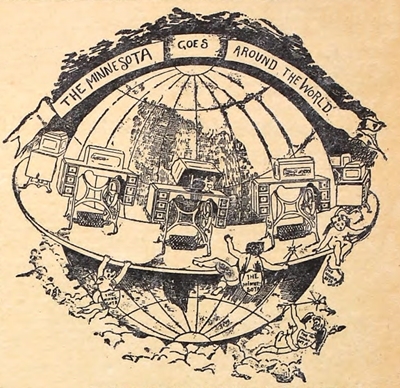
The spreadsheet linked below contains a chart showing sewing machine models offered by Sears from 1894
through 1949. Several catalogs are missing. If you know of a source with scans of the missing catalogs,
I would be very happy to hear from you. Please email me with "Sears Info"
in the subject line.
This chart just reports what I found in the catalogs, which does not necessarily cover all models offered
or exact matches with real machines.
This chart is a work in progress. Corrections and new information would be gratefully received.
Please email me with "Sears Info"
in the subject line.
Click here
to view the spreadsheet. This a huge spreadsheet with over 100 columns. It is best viewed on a full size computer. There are notes below the model/date
chart to explain the codes I used and add details about come items.
The spreadsheet has 3 sheets. The first is the title page with general info. The second is sewing machine models by catalog.
I identified manufacturers from a variety of sources, mostly from
this ISMACS article.
I found a few discrepancies between the article and the catalogs. Many thanks to Jon Helig for sorting out the Davis
models for me. If you see anything that needs to be corrected,
or if you can fill in any of the blank fields, Please email me with "Sears Info"
in the subject line.
The 3rd sheet was just for fun - I went through and counted how many pages each of the main models had in each Spring catalog.
It shows the rise and fall of various models. Initially, the Minnesota and Howard were the "high grade" machines,
then Minnesota A was the top of the line. They were quite amusing in their
descriptions of their cheaper models, along the lines of we don't recommend that you buy these cheap machines, but if you insist,
here they are. In the 1910s, Kenmore was a low end machine.
Catalog images to go with almost
all of the models in the spreadsheet can be found on
this page.
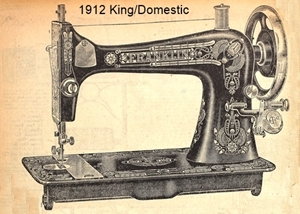
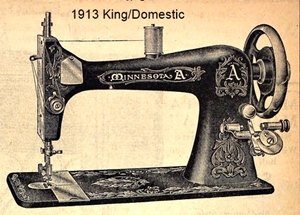
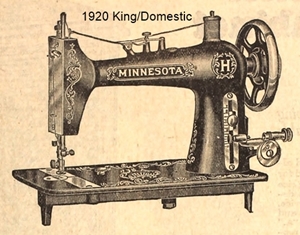
The Franklin VS debuted as the headliner and stayed that way until the Franklin rotary was introduced.
The Minnesota A, Minnesota H and Franklin VS were the only models from the early years that made it into the 1930s.

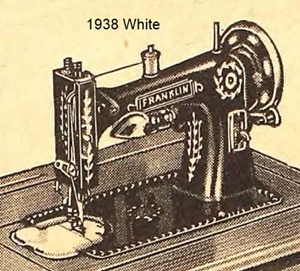
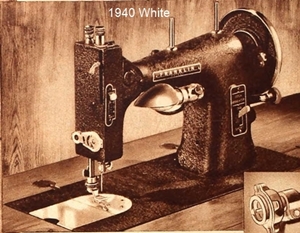
The Economy Rotary first appeared in the 1917 Spring catalog and continued through Spring of 1925. 1924 is the year White bought Domestic.
There was no rotary in the 1925 Fall catalog, then the Franklin Rotary, a badged White Rotary complete with t-shirt plate,
debuted in Spring of 1926 as their premier model. In 1940, the t-shirt plate was changed to the version shown above on the right.
It was interesting to see their marketing trials. They introduced the electric Franklin in a table in 1918, but it must not have
sold well because they dropped it after 2 catalogs and did not bring it back until fall of 1923. I guess it was ahead of its time.
On the other hand, the portable electric Franklin appeared in fall of 1919 and stayed the course through the 30s.
For 3 catalogs in 1935 and 1936 they dropped the Franklin rotary and called it a Minnesota Rotary instead.
They even used Franklin graphics in the first catalog. That must have also been a disaster because they went back to Franklin
Rotary and left it that way.
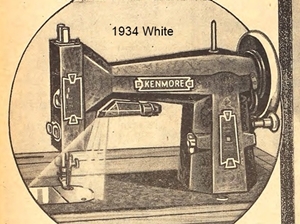
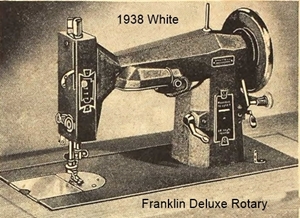
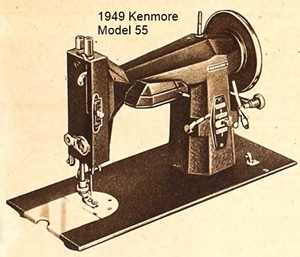
The angular Kenmore Rotary appeared in the two 1934 catalogs, then disappeared. That is the first machine I saw with reverse,
which they called a "backward lever". The next 3 catalogs had the Minnesota Rotary
mentioned above. Then in 1938 that angular machine came back as the Franklin Deluxe Rotary. They offered the regular
and deluxe models up through spring of 1942, after which sewing machines were dropped from the catalog until fall of 1949 due
to WWII. In 1949, they came out with the Kenmore 95 with the "smart, modern appearance"(reminiscent of a bomb)
and called the angular rotary a Model 55.
The angular looking rotary no doubt had design changes over the years; I am just referring to the general appearance that is so
different from their other machines.
Another oddity is the 1941 Spring catalog, where for just one catalog they called all the Franklins "Kenmore-Franklin".
There are still many questions to answer. For example:
- The Davis Model H Iowa in
this Minnesota article
is not in any of these catalogs. I speculate that it was in the missing 1899 catalog.
- The National Minnesota
this Minnesota article
is not in any of these catalogs, either.
- The two catalogs that the Davis Model E Iowa is in also have the Davis Model E Minnesota,
so why have two identical machines with different decals? Has anyone ever seen this Iowa model or the Improved Iowa?
- There are a lot of Davis Minnesota As. At least three, maybe four. The catalogs show the usual top view and usually
an underneath view. The two do not change at the same time. Just a catalog editing error?
I think there are 4 versions but I am not sure.
- Why did Sears intorduce the Minnesota A, B, C, D and F in 1903, but wait until 1934 for the Minnesota E?
Any additions or corrections to this work in progress would be most appreciated.









